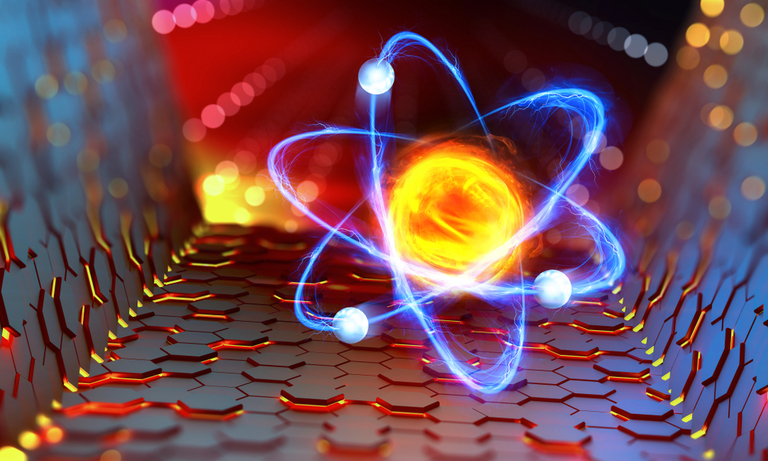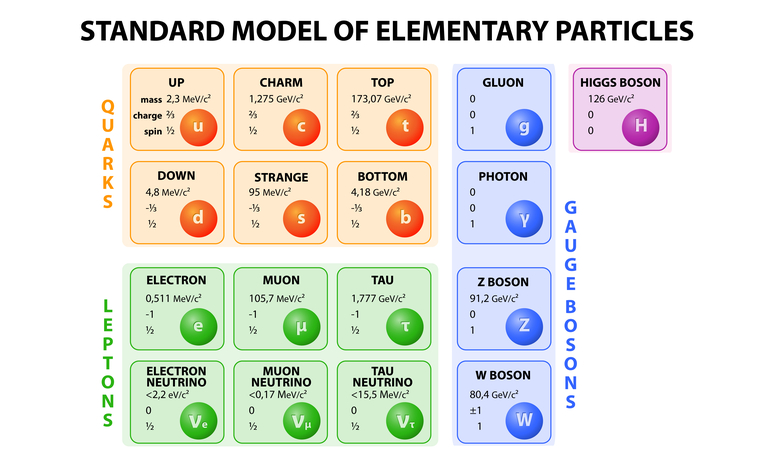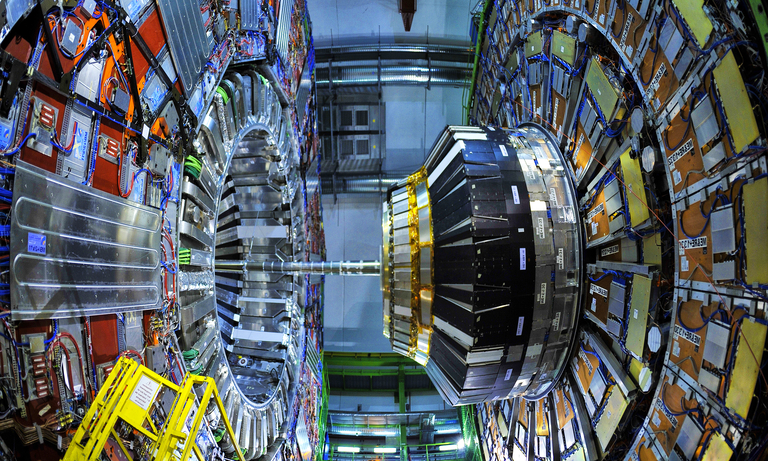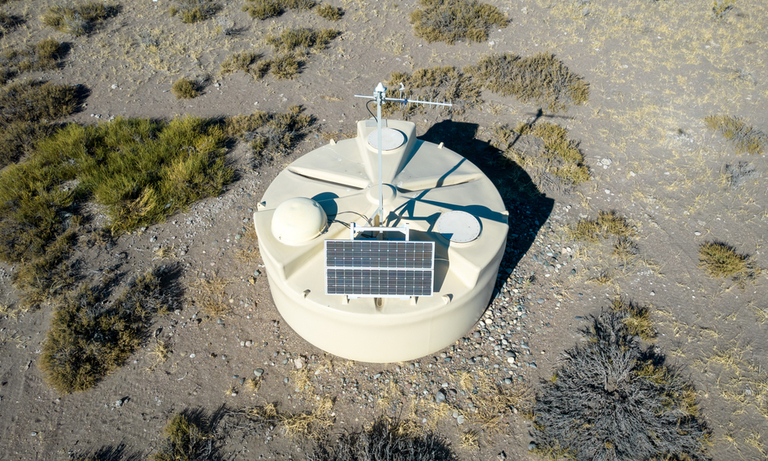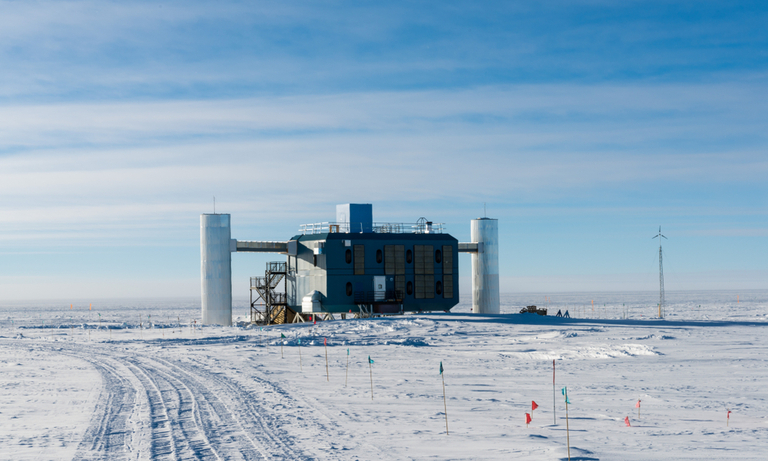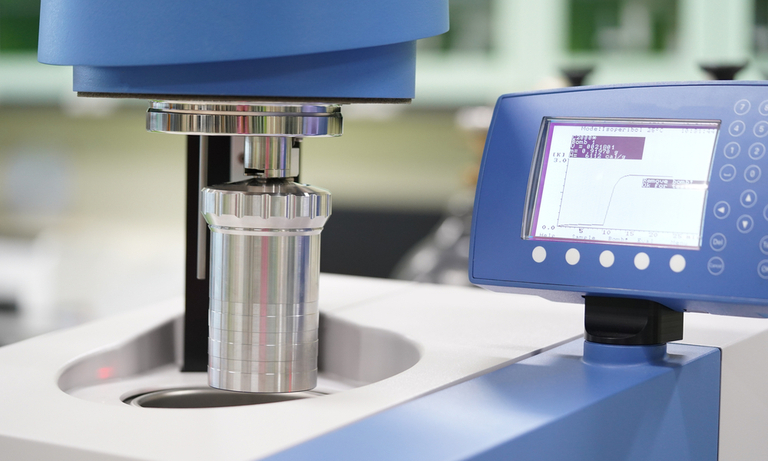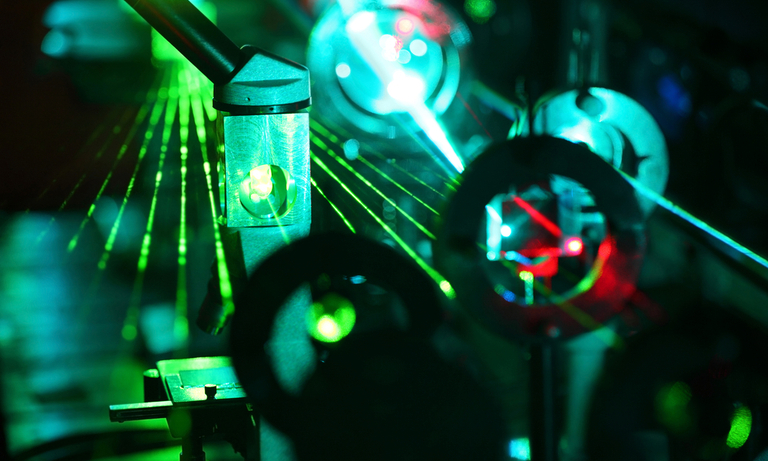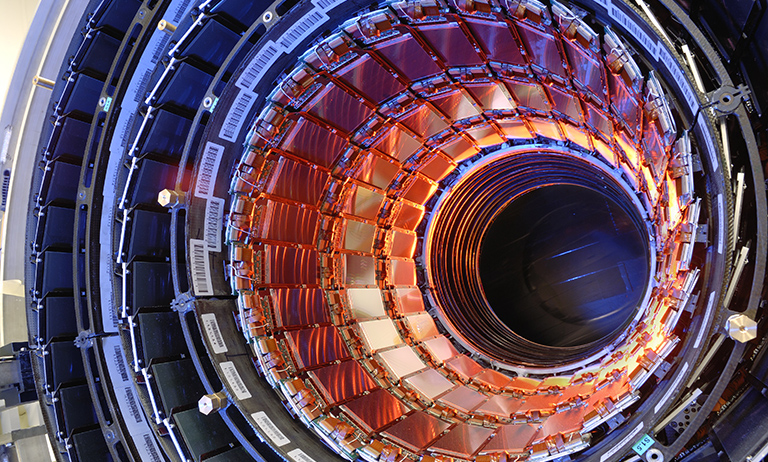Home
Products
Physics Research Field
Type of Experiment
Detector Type
Behind the Science
Tech in a Nutshell
United Kingdom (EN)
Select your region or country.


Ring Imaging Cherenkov Detectors
Ring Imaging Cherenkov (RICH) detectors are photosensitive position devices realized to identify particles thanks to the Cherenkov light they emit.
They are commonly used in accelerator experiments (i.e. LHCb, ALICE, FAIR/CBM) and they consist of a radiator and a photosensitive surface made by a matrix of photosensors. When a particle crosses the radiator, with a very high velocity, it forms a light cone (Cherenkov light cone).
The photosensitive surface is designed to capture the Cherenkov emission of the particles crossing the radiator. By measuring the angle of emission, θ, of the Cherenkov cone, RICH detectors can go back to the particle velocity. Combining this information with the direction of the particle (obtained matching the RICH information with those of the tracking detector) it is possible to calculate the mass and charge of the particle. The knowledge of the mass and charge allows the identification of the particle.
This detection technique, proposed for the first time in 1977 by Jack Séguinot and Tom Ypsilantis, is based on the principle that the speed of light can be exceeded when particles move in a medium (air, water, ice, quartz, …), also called radiator. Crossing a medium a particle faster than the light produces a shock wave in the form of light. This phenomenon, called Cherenkov effect, is very similar to the sonic boom produced by an aircraft breaking the sound barrier.
The light emission occurs continuously while the particle is crossing the radiator. Considering four possible consecutive instant of time it is possible to “capture” the relative light emission and it is easy to understand that at the end it will result in a cone shape and the angle of emission θ strictly depends on the particle velocity.
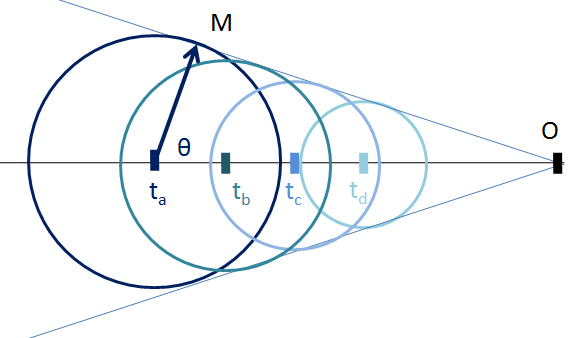
Fig. 1 Scheme of the Cherenkov light emission by a particle
Particle tagging is one of the most challenging aspects of high energy physics experiments. In modern particle accelerators the high rates and the background conditions give binding constraints to the detectors’ characteristics.
The use of a RICH-like detector is necessary for all those high energy physics experiments which aim to identify charged hadrons in the final state.
NA62 is a kaon factory located at CERN, it was proposed to measure the very rare kaon decay K+-> π+-nu-nubar to extract a 10% measurement of the CKM parameter |Vtd|.
To achieve this result, NA62 exploits a RICH detector which allows the identification of pions with respect to muons between 15 and 35 GeV/c momentum providing a muon suppression factor of at least 10-2.
It consists of a cylindrical vessel (Length ~18m, Ø=3.2 – 3.8m ) with the beam pipe passing in its center. The vessel is filled with Neon (1 atm), at the downstream end a mosaic hexagonal mirrors focuses the Cherenkov light onto 2x1000 photo detectors situated at the upstream end of the vessel.
The reflected light is collected by about 2000 PMTs (PhotoMultiplier Tubes) Hamamatsu type R7400U-03 photomultipliers. These devices were chosen for their compactness and high speed.
The NA62 RICH can also measure the pion crossing time with a resolution of about 100 ps, producing the L0 trigger for a charged track.
The LHCb experiment aims to study heavy-flavour hadron production. It will measure the CKM parameters of the Unitarity Triangle with high precision, and search for physics beyond the Standard Model.
This experiment boasts two RICH-like detectors: RICH1 and RICH2.
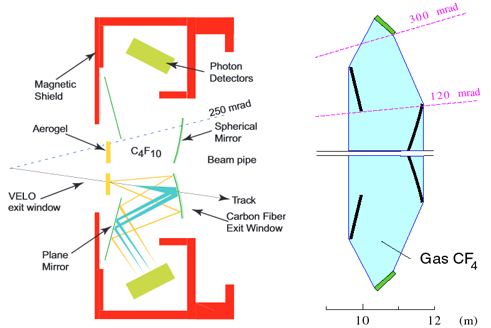
Fig. 2 The LHCb RICH detector: RICH1 (Left) RICH2 (Right).
copyright by CERN
RICH-1 is the upstream detector with silica aerogel and C4F10 gas radiators (FIG. 2). It is set up to detect low-momentum particles. RICH-2 is the downstream detector that uses CF4 gas as radiator. It has an acceptance which is limited to the low-angle region where there are mostly high-momentum particles.
In their first versions, both RICH1 and RICH2 used HPDs (Hybrid PhotoDetectors). When they upgraded the detectors, instead the LHCb collaboration adopted new MAPMTs (8x8 pixels each) from Hamamatsu, to collect the Cherenkov light emitted in the radiator.
For RICH1 and the inner region of RICH2 the R13742 (2700 MAPMT with a 23x23 mm2 active area) was selected.
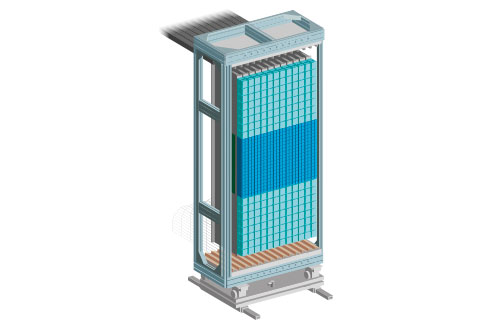
Fig. 3 The RICH2 photosensitive surface.
For the outer regions of RICH2 instead the R13743 (400 MAPMT with a 48.5 x 48.5 mm2) was selected (Fig. 3).
The current choice of using PMT-like detectors (photomultiplier and multianode photomultiplier tubes) has the advantage of a very low dark current, whilst they are very sensitive to the strong magnetic fields present in the particle accelerators.
Hamamatsu Photonics is following some of the R&D projects to find alternative solutions to PMTs. It has been proved that Silicon PhotoMultipliers (SiPMs) can be used as single photon detectors in a RICH counter. They have the great advantage of being insensitive to the magnetic fields, but the disadvantage of a high dark current.
Recently, Hamamatsu made commercially available SiPMs with a rather low dark current and a larger active area (MPPCs Multi Pixel Photon Counters), offering a possibility for a much better signal-to-noise ratio.
Up to now, Hamamatsu 8 × 8 channel S11834 MPPCs module has been successfully trialed in a test beam with good results.
- Confirmation
-
It looks like you're in the . If this is not your location, please select the correct region or country below.
You're headed to Hamamatsu Photonics website for GB (English). If you want to view an other country's site, the optimized information will be provided by selecting options below.
In order to use this website comfortably, we use cookies. For cookie details please see our cookie policy.
- Cookie Policy
-
This website or its third-party tools use cookies, which are necessary to its functioning and required to achieve the purposes illustrated in this cookie policy. By closing the cookie warning banner, scrolling the page, clicking a link or continuing to browse otherwise, you agree to the use of cookies.
Hamamatsu uses cookies in order to enhance your experience on our website and ensure that our website functions.
You can visit this page at any time to learn more about cookies, get the most up to date information on how we use cookies and manage your cookie settings. We will not use cookies for any purpose other than the ones stated, but please note that we reserve the right to update our cookies.
1. What are cookies?
For modern websites to work according to visitor’s expectations, they need to collect certain basic information about visitors. To do this, a site will create small text files which are placed on visitor’s devices (computer or mobile) - these files are known as cookies when you access a website. Cookies are used in order to make websites function and work efficiently. Cookies are uniquely assigned to each visitor and can only be read by a web server in the domain that issued the cookie to the visitor. Cookies cannot be used to run programs or deliver viruses to a visitor’s device.
Cookies do various jobs which make the visitor’s experience of the internet much smoother and more interactive. For instance, cookies are used to remember the visitor’s preferences on sites they visit often, to remember language preference and to help navigate between pages more efficiently. Much, though not all, of the data collected is anonymous, though some of it is designed to detect browsing patterns and approximate geographical location to improve the visitor experience.
Certain type of cookies may require the data subject’s consent before storing them on the computer.
2. What are the different types of cookies?
This website uses two types of cookies:
- First party cookies. For our website, the first party cookies are controlled and maintained by Hamamatsu. No other parties have access to these cookies.
- Third party cookies. These cookies are implemented by organizations outside Hamamatsu. We do not have access to the data in these cookies, but we use these cookies to improve the overall website experience.
3. How do we use cookies?
This website uses cookies for following purposes:
- Certain cookies are necessary for our website to function. These are strictly necessary cookies and are required to enable website access, support navigation or provide relevant content. These cookies direct you to the correct region or country, and support security and ecommerce. Strictly necessary cookies also enforce your privacy preferences. Without these strictly necessary cookies, much of our website will not function.
- Analytics cookies are used to track website usage. This data enables us to improve our website usability, performance and website administration. In our analytics cookies, we do not store any personal identifying information.
- Functionality cookies. These are used to recognize you when you return to our website. This enables us to personalize our content for you, greet you by name and remember your preferences (for example, your choice of language or region).
- These cookies record your visit to our website, the pages you have visited and the links you have followed. We will use this information to make our website and the advertising displayed on it more relevant to your interests. We may also share this information with third parties for this purpose.
Cookies help us help you. Through the use of cookies, we learn what is important to our visitors and we develop and enhance website content and functionality to support your experience. Much of our website can be accessed if cookies are disabled, however certain website functions may not work. And, we believe your current and future visits will be enhanced if cookies are enabled.
4. Which cookies do we use?
There are two ways to manage cookie preferences.
- You can set your cookie preferences on your device or in your browser.
- You can set your cookie preferences at the website level.
If you don’t want to receive cookies, you can modify your browser so that it notifies you when cookies are sent to it or you can refuse cookies altogether. You can also delete cookies that have already been set.
If you wish to restrict or block web browser cookies which are set on your device then you can do this through your browser settings; the Help function within your browser should tell you how. Alternatively, you may wish to visit www.aboutcookies.org, which contains comprehensive information on how to do this on a wide variety of desktop browsers.
5. What are Internet tags and how do we use them with cookies?
Occasionally, we may use internet tags (also known as action tags, single-pixel GIFs, clear GIFs, invisible GIFs and 1-by-1 GIFs) at this site and may deploy these tags/cookies through a third-party advertising partner or a web analytical service partner which may be located and store the respective information (including your IP-address) in a foreign country. These tags/cookies are placed on both online advertisements that bring users to this site and on different pages of this site. We use this technology to measure the visitors' responses to our sites and the effectiveness of our advertising campaigns (including how many times a page is opened and which information is consulted) as well as to evaluate your use of this website. The third-party partner or the web analytical service partner may be able to collect data about visitors to our and other sites because of these internet tags/cookies, may compose reports regarding the website’s activity for us and may provide further services which are related to the use of the website and the internet. They may provide such information to other parties if there is a legal requirement that they do so, or if they hire the other parties to process information on their behalf.
If you would like more information about web tags and cookies associated with on-line advertising or to opt-out of third-party collection of this information, please visit the Network Advertising Initiative website http://www.networkadvertising.org.
6. Analytics and Advertisement Cookies
We use third-party cookies (such as Google Analytics) to track visitors on our website, to get reports about how visitors use the website and to inform, optimize and serve ads based on someone's past visits to our website.
You may opt-out of Google Analytics cookies by the websites provided by Google:
https://tools.google.com/dlpage/gaoptout?hl=en
As provided in this Privacy Policy (Article 5), you can learn more about opt-out cookies by the website provided by Network Advertising Initiative:
http://www.networkadvertising.org
We inform you that in such case you will not be able to wholly use all functions of our website.
Close



